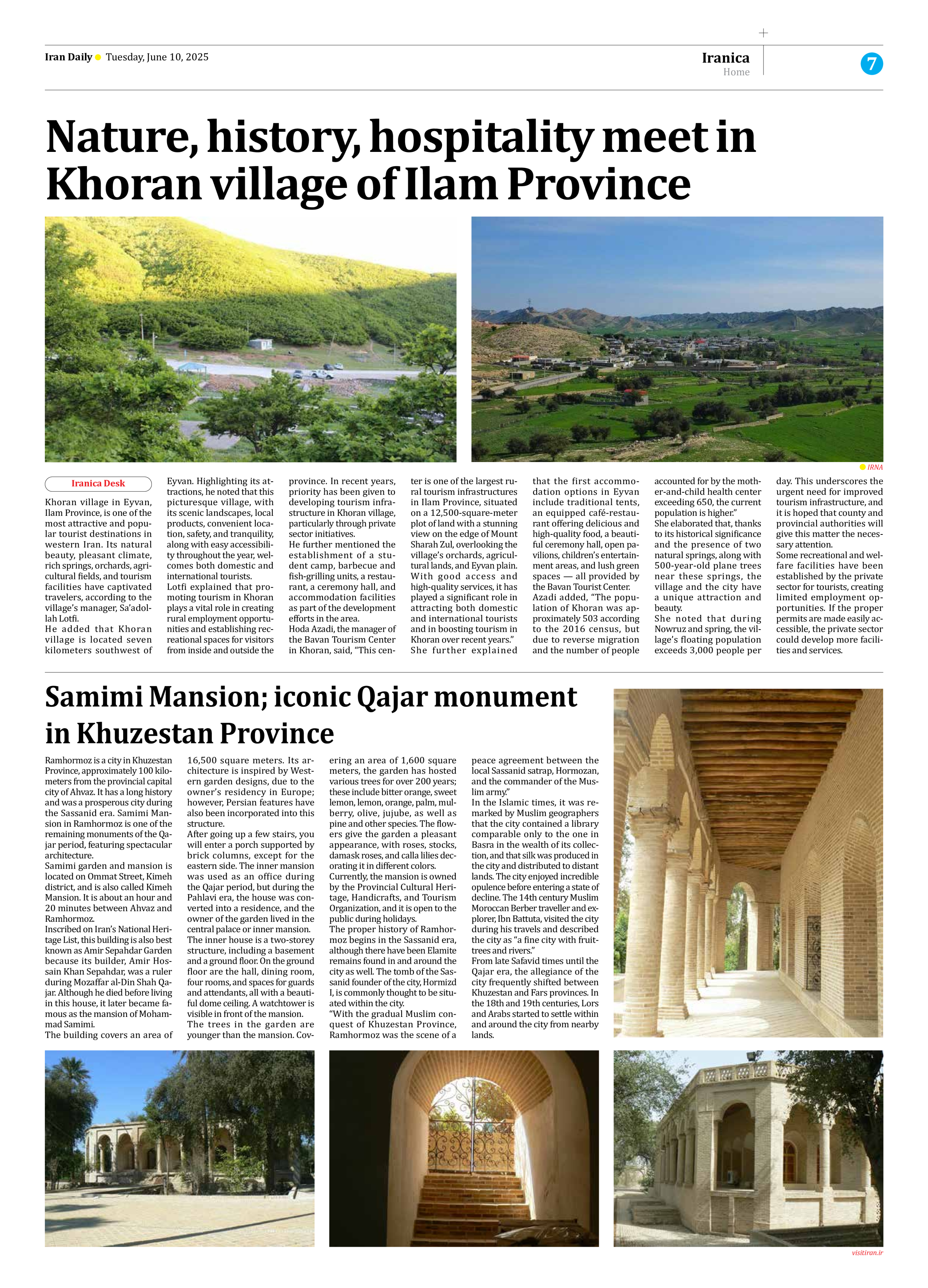
Samimi Mansion; iconic Qajar monument in Khuzestan Province
Ramhormoz is a city in Khuzestan Province, approximately 100 kilometers from the provincial capital city of Ahvaz. It has a long history and was a prosperous city during the Sassanid era. Samimi Mansion in Ramhormoz is one of the remaining monuments of the Qajar period, featuring spectacular architecture.
Samimi garden and mansion is located on Ommat Street, Kimeh district, and is also called Kimeh Mansion. It is about an hour and 20 minutes between Ahvaz and Ramhormoz.
Inscribed on Iran’s National Heritage List, this building is also best known as Amir Sepahdar Garden because its builder, Amir Hossain Khan Sepahdar, was a ruler during Mozaffar al-Din Shah Qajar. Although he died before living in this house, it later became famous as the mansion of Mohammad Samimi.
The building covers an area of 16,500 square meters. Its architecture is inspired by Western garden designs, due to the owner’s residency in Europe; however, Persian features have also been incorporated into this structure.
After going up a few stairs, you will enter a porch supported by brick columns, except for the eastern side. The inner mansion was used as an office during the Qajar period, but during the Pahlavi era, the house was converted into a residence, and the owner of the garden lived in the central palace or inner mansion.
The inner house is a two-storey structure, including a basement and a ground floor. On the ground floor are the hall, dining room, four rooms, and spaces for guards and attendants, all with a beautiful dome ceiling. A watchtower is visible in front of the mansion.
The trees in the garden are younger than the mansion. Covering an area of 1,600 square meters, the garden has hosted various trees for over 200 years; these include bitter orange, sweet lemon, lemon, orange, palm, mulberry, olive, jujube, as well as pine and other species. The flowers give the garden a pleasant appearance, with roses, stocks, damask roses, and calla lilies decorating it in different colors.
Currently, the mansion is owned by the Provincial Cultural Heritage, Handicrafts, and Tourism Organization, and it is open to the public during holidays.
The proper history of Ramhormoz begins in the Sassanid era, although there have been Elamite remains found in and around the city as well. The tomb of the Sassanid founder of the city, Hormizd I, is commonly thought to be situated within the city.
“With the gradual Muslim conquest of Khuzestan Province, Ramhormoz was the scene of a peace agreement between the local Sassanid satrap, Hormozan, and the commander of the Muslim army.”
In the Islamic times, it was remarked by Muslim geographers that the city contained a library comparable only to the one in Basra in the wealth of its collection, and that silk was produced in the city and distributed to distant lands. The city enjoyed incredible opulence before entering a state of decline. The 14th century Muslim Moroccan Berber traveller and explorer, Ibn Battuta, visited the city during his travels and described the city as “a fine city with fruit-trees and rivers.”
From late Safavid times until the Qajar era, the allegiance of the city frequently shifted between Khuzestan and Fars provinces. In the 18th and 19th centuries, Lors and Arabs started to settle within and around the city from nearby lands.







